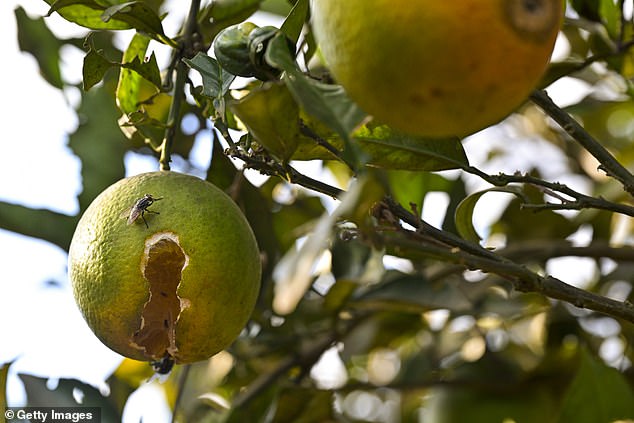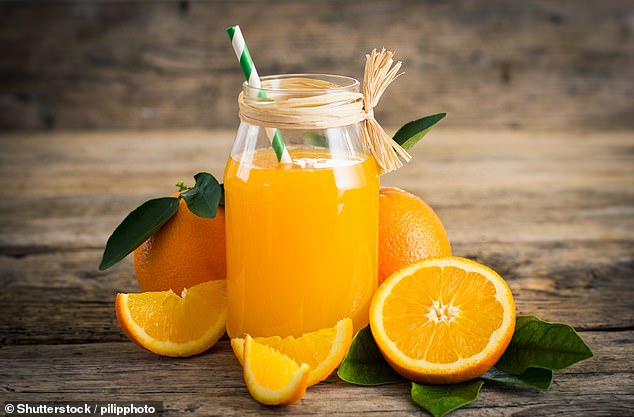The world’s most popular breakfast drink is at risk of disappearing due to crop-destroying diseases and bad weather.
Orange trees in the United States and Brazil have suffered from citrus greening disease caused by sap-sucking insects that kill the trees after bittering the existing fruit.
And Florida has also been hit by hurricanes that have destroyed much of the United States’ supply.
Together, Florida and Brazil account for more than 85 percent of the world’s orange juice supply, making up a large portion of the economies.
This year’s harvest has decreased by 24 percent compared to 2023, causing orange juice offer prices to increase by 20 percent.
Orange trees in the US and Brazil have suffered from citrus greening disease, which kills trees within a few years and has caused a global citrus shortage.
Citrus greening disease, also called Huanglongbing, is a bacterial infection that is identified as one of the most serious citrus diseases in the world because there is no cure.
Once infected, most trees will produce discolored, twisted, and bitter fruit, leading to them dying within a few years.
The most vulnerable orange trees grow in regions that see consistent temperatures of 77 degrees Fahrenheit, and the disease has already destroyed millions of acres of these crops in the United States and abroad.
The disease can spread from one citrus nursery to another, and the Florida Department of Citrus reported that the state’s citrus production could fall more than 80 percent by 2026.
The culprit for the losses is a small insect called the Asian citrus psyllid, which was first found in Palm Beach County, Florida, in 1998.
Within two years, the insect had spread to 31 counties and has since made its way across Texas, Alabama, Georgia, South Carolina, Hawaii and several other states.
The Asian citrus psyllid kills trees by first extracting large amounts of sap from the leaves while feeding and at the same time producing a substantial amount of honeydew that covers the vegetation.
Because honeydew coats the leaves, it stimulates the growth of soot, blocking sunlight from reaching the leaves.
Over the past 20 years, citrus greening disease has caused Florida’s orange juice supply to decline from 240 million cases produced each year to just 17 million.
Florida is the second largest producer of orange juice in the world and the largest in the United States: it produces approximately half of what is consumed in the country.
Meanwhile, Sao Paulo and Minas Gerais, Brazil’s main orange-producing areas, are only expected to harvest 232 million boxes this year, a 24 percent drop from 2023.

Citrus greening disease (pictured), also called Huanglongbing, is a bacterial infection identified as one of the most serious citrus diseases in the world because there is no cure.
Supply chains are considering alternative methods to overcome orange juice shortages, which could cause significant long-term challenges.
They have suggested combining oranges with frozen juice and are lobbying the U.S. Food and Drug Administration to relax food regulations and allow them to add other citrus fruits to orange juice.
Blending new crop oranges with frozen juice or other fruits like tangerines would require additional transportation and processing costs that could further increase the cost of your morning beverage.
This comes as Americans are already complaining about the cost of inflation and might expect their orange juice to cost less because it’s diluted with other ingredients.
The cost of a 16-ounce orange juice cost the average consumer $2.41 in 2019, but by the end of 2023, it had risen to $3.41, while consumer demand fell by one-fifth compared to the last year.
“The global orange juice industry is in crisis,” said Francois Sonneville, senior beverage analyst at Rabobank. The Guardian.
“Florida’s industry has virtually disappeared and Brazilian orchards are plagued by disease, rising costs and unfavorable growing conditions, leaving the world’s supply of orange juice at its lowest point in decades,” he said.


